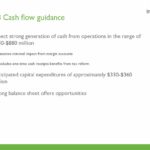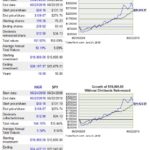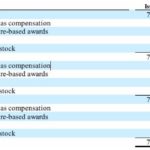Contents
Summary
- Ingredion has pulled back ~25% from its 1 year high of $146.28 set late January 2018.
- When Q1 results were released, management lowered its FY2018 adjusted EPS guidance from that provided when FY2017 results were released.
- It is facing headwinds in the form of higher production costs caused by inconsistent demand in the US Northeast and Canada, sharply higher freight costs, and commodity pricing pressures.
- It continues to drive growth for the specialty ingredients products within the 3 categories of its portfolio as they deliver more functionality than other products and add additional customer value.
- Long-term investors should welcome significant stock price pullbacks if the pullbacks are not the result of a long-term impairment to a company’s operations.
Introduction
I am always looking for attractively / reasonably valued companies and recently saw an Ingredion Incorporated (NYSE: INGR) tanker truck while commuting on one of our city’s major arteries. I am somewhat familiar with the company but had never researched it. A cursory look at the most recent stock ticker metrics revealed that INGR has retraced ~25% from a high of $146.28 set near the end of January 2018.
With INGR trading at ~$109.67, I now take a look at whether the pullback is the result of some permanent long-term impairment to the business, the company is merely encountering short-term headwinds, or the stock was just overvalued and and has now retraced to fair value / undervalue territory.
Business Overview
INGR might not be a household name but it traces its roots to 1906. It began as Corn Products Refining Co. (subsequently CPC) through the merger of leading US corn refiners and was ultimately renamed Ingredion in 2012.
It is a leading global ingredients solutions provider which supplies a broad range of customers in many diverse industries around the world, including the food, beverage, paper and corrugating, brewing, pharmaceutical, textile, and personal care industries, as well as the global animal feed and corn oil markets.
INGR’s product line includes starches and sweeteners, animal feed products and edible corn oil. The starch-based products include both food-grade and industrial starches, and biomaterials while the sweetener products include glucose syrups, high maltose syrups, high fructose corn syrup, caramel color, dextrose, polyols, maltodextrins, and glucose and syrup solids.
All products are derived primarily from the processing of corn and other starch-based materials, such as tapioca, potato, and rice.
The company is managed on a regional basis. Its operations are broken out into 4 reportable business segments: North America, South America, Asia Pacific and Europe, Middle East, and Africa (“EMEA”).
- The North America segment includes businesses in the U.S., Mexico, and Canada;
- The South America segment includes businesses in Brazil, the Southern Cone of South America (Argentina, Peru, Chile, Uruguay, Colombia, and Ecuador);
- The Asia Pacific segment includes businesses in South Korea, Thailand, China, Australia, Japan, New Zealand, Indonesia, Singapore, the Philippines, Malaysia, and India;
- The EMEA segment includes businesses in Pakistan, Germany, the United Kingdom, South Africa, and Kenya.
In FY2017, total net sales amounted to ~$5.8B of which ~61% was derived from operations in North America, ~17% from operations in South America, ~12% from operations in Asia Pacific, and ~10% from operations in EMEA.
Demand for its products is generally balanced throughout the year. Demand for sweeteners in South
America, however, is greater in the 1st and 4th quarters (summer season) while demand for sweeteners in North America is greater in the 2nd and 3rd quarters. No material seasonal fluctuations in INGR’s consolidated net sales is experienced due to the offsetting impact of these demand trends.
The following is the percentage of INGR’s portfolio of products and net sales for FY2017, FY2016, and FY2015:
- Starch Products: 44%, 46%, and 44%
- Sweetener Products: 37%, 37%, and 40%
- Coproducts and others: 19%, 17%, and 16%
Within each category, a portion of INGR’s products is considered Specialty Ingredients. They comprised ~28%, ~26%, and ~25% of net sales for 2017, 2016, and 2015.
The starch and sweetener industry is highly competitive with many products viewed as basic ingredients that compete with virtually identical products and derivatives manufactured by other companies in the industry. The U.S. is a highly competitive market where there are other starch processors, several of which are divisions of larger enterprises. Some of these competitors have vertically integrated their starch processing and other operations. The largest competitors are:
- ADM Corn Processing Division, a division of Archer-Daniels-Midland Company;
- Cargill, Inc.;
- Tate & Lyle Ingredients Americas, Inc.;
INGR’s operations in Mexico and Canada face competition from U.S. imports and local producers including ALMEX, a Mexican joint venture between ADM and Tate & Lyle.
In South America, Cargill has starch processing operations in Brazil and Argentina.
INGR also faces competition from Roquette Frères S.A. primarily in the North America region.
There are also many smaller local corn and tapioca refiners which operate in many of INGR’s markets.
Competition is largely based on price, quality, and product availability.
Ingredion has morphed over the years through the acquisition of several companies with the most recent acquisitions being:
- November 29, 2016 - Shandong Huanong Specialty Corn Development Co., Ltd. located in Shandong Province, China. This acquisition added a second manufacturing facility to INGR’s operations in China. It produces corn starch raw material for INGR’s plant in Shanghai which makes value-added ingredients for the food industry.
- December 29, 2016 - TIC Gums Incorporated, a privately held, U.S.-based company that provides advanced texture systems to the food and beverage industry. This acquisition enhanced INGR’s texture capabilities and formulation expertise and provides additional opportunities to provide solutions for natural, organic, and clean-label demands of our customers. TIC Gums operates a production facility in Belcamp, Maryland and another in Guangzhou, China. TIC Gums also maintains a research and development lab within each production facility.
- March 9, 2017 - Sun Flour Industry Co., Ltd. in Thailand. This acquisition added a fourth manufacturing facility to INGR’s operations in Thailand. It produces rice-based ingredients used primarily in the food industry.
Q1 2018 Results and FY2018 Guidance
On May 3, 2018, INGR released its Q1 2018 results.
Volumes grew by 2%, driven by core and specialties growth and while INGR delivered reported and adjusted EPS growth, operating income was negatively impacted by the following operational headwinds.
- Asia Pacific - impacted by extraordinary tapioca costs.
- North America - impacted by a sharp increase in freight costs, higher production costs caused by inconsistent demand in the Northeast and Canada over the winter season, and commodity pricing pressures.
INGR has begun to mitigate inflationary pressures through pricing actions, customer contract management, and the acceleration of network optimization and cost-reduction initiatives. It is also investing in higher-value specialty expansion projects and continued growth from the specialty products portfolio is expected to continue.
Management has indicated the sharp increase in freight costs in North America was primarily related to a spike in ‘dry van’ freight rates. Its common carriers faced increased demand as rail delays shifted loads to trucking. Furthermore, the enforcement of new regulations impacted driver availability.
INGR has reassessed its broker contracts and is recovering higher freight costs where possible. It does not anticipate the full recovery of increased rate costs during 2018 but expects reduced freight cost impacts throughout the rest of FY2018.
It also experienced higher production costs caused by inconsistent demand in the Northeast and Canada during the winter. At the end of Q1, INGR had higher starch inventories but these inflated inventory levels are expected to be rebalanced by the end of Q3.
In addition, INGR experienced weaker ethanol margins and lower corn oil pricing.
INGR was also hard hit by excessive rainfall in Thailand which started in 2017. This has impacted both the tapioca harvest and root quality which significantly increased raw material cost during Q1. In fact, the Thai tapioca industry has not experienced such a sharp and prolonged rise in tapioca costs since 2010.
In order to address the tapioca supply issue, INGR is actively working to adjust pricing to offset the rapid cost increases. Tapioca price pressure is expected to continue in Q2 and Q3 until the next harvest in Q4. Although INGR experienced an unprecedented run-up in tapioca costs in the last 7 months, its extensive production and sourcing network has enabled it to continue to supply customers.
While net sales were up for the quarter with higher volumes and foreign exchange more than offsetting lower price/mix, gross profit margin was lower by 10 bps.. This is because higher freight and production costs in North America and higher tapioca costs in Asia Pacific more than offset lower manufacturing and restructuring costs and better performance in South America and EMEA.
Source: Q1 2018 Earnings Release and 2018 Guidance – May 3 2018
Given these short-term headwinds, INGR has lowered its guidance for 2018 adjusted EPS to $7.90 - $8.20 from its initial guidance of $8.10 - $8.50 which was provided February 1, 2018; this guidance continues to exclude acquisition-related integration and restructuring costs as well as any potential impairment costs.
Source: INGR - Q4 and FY2017 Earnings Release and 2018 Guidance – February 1, 2018
Management continues to expect cash from operations in 2018 to be $0.83B - $0.88B; this excludes the onetime cash receipts benefit from tax reform. INGR continues to forecast $0.33B - $0.36B in capital expenditures around the world in 2018 to support growth and cost and process improvements.
Credit Ratings
Moody’s upgraded INGR’s senior unsecured long-term debt in April 2018 from Baa2 to Baa1. This is the top tier of the lower medium grade range.
S&P Global has rated INGR BBB since 2008 and there is no indication this credit rating is under review. This is the middle tier of the lower medium grade range.
These ratings are acceptable from my perspective.
Valuation
When INGR released its FY2017 results and provided guidance for FY2018 on February 1, 2018 calling for 2018 EPS of $8.08 - $8.47 per share and adjusted EPS $8.10 - $8.50 per share, shares closed at $137.44. This resulted in a forward PE range of ~16.23 - ~17.
With the revised 2018 EPS guidance of $7.86 - $8.15 and adjusted EPS guidance of $7.90 - $8.20 and INGR closing at $109.67 on June 22, 2018, we now get a forward PE range of ~13.46 - ~13.95. This compares favorably with INGR’s 5 year average PE of ~16.7 and that for the S&P500 which is ~20.5. This ~25% pullback from the end of January 2018 high now makes INGR more appealing.
INGR’s dividend and stock split (one 2 for 1 stock split in early 2005) history can be found here. INGR started paying a dividend in 1998. Looking at the dividend history, however, we see that it has frozen its dividend for several consecutive quarters.
The current $0.60 share/quarter dividend payable July 25th to shareholders of record as at July 2nd will mark the 4th consecutive dividend at this level. I anticipate INGR will announce a ~$0.04/quarter/share dividend increase in September; business conditions are such that I do not envision another $0.10 increase to match that announced in 2017.
INGR’s dividend yield based on the current $109.67 stock price is ~2.19%.
Looking at how INGR has performed relative to the S&P500 over the past 10 years we see that INGR’s performance greatly exceeded that of the S&P500 until the pullback from a high of $146.28 set near the end of January 2018. Now, INGR’s performance over the past 10 years just marginally exceeds that of the S&P500.
Source: Tickertech.com
On December 12, 2014, INGR’s Board of Directors authorized a new stock repurchase program permitting the purchase of up to 5 million of the outstanding common shares from January 1, 2015 to December 12, 2019.; INGR’s previously authorized stock repurchase program permitting the purchase of up to 4 million shares was fully utilized.
INGR expects that, over time, share repurchases will offset the dilutive impact of shares issued under the stock incentive plan.
In Q1 2017 INGR repurchased 1 million common shares in open market transactions at a cost of ~$0.123B. There were no additional open market shares repurchased during the remainder of 2017.
In 2016, INGR had no share repurchases of common shares in open market transactions. In 2015, INGR repurchased 435 thousand common shares in open market transactions at a cost of ~$0.034B.
The following reconciliation of common stock share activity for the years ended December 31, 2017, 2016, and 2015 shows that the number of issued and outstanding shares has been relatively consistent over the past several years.
Source: INGR - FY2017 10K page 93 of 145
Final Thoughts
The recent ~25% pullback in INGR’s stock price now makes it a far more appealing investment than earlier this year even though management has reduced its guidance for FY2018. In my opinion, however, I think there is the likelihood INGR’s stock price will retrace further. My rationale for this train of thought is that the short-term headwinds do not appear to have yet come to an end. In addition, I envision the implementation of trade tariffs by the US and rataliatory trade tariffs by foreign countries have a strong possibility of triggering a long overdue overall market pullback.
I am cautiously optimistic patient investors will be rewarded before 2018 comes to an end with better entry points for high quality companies which have become, in my opinion, overvalued. I am not about to initiate a position in INGR at this juncture but will continue to monitor the company’s performance and to reassess my current investment decision.
Thanks for reading!
Note: I sincerely appreciate the time you took to read this article. Please send any feedback, corrections, or questions to [email protected]
Disclaimer: I have no knowledge of your individual circumstances and am not providing individualized advice or recommendations. I encourage you not to make any investment decision without conducting your own research and due diligence. You should also consult your financial advisor about your specific situation.
Disclosure: I do not currently own shares in INGR nor do I intend to purchase shares within the next 72 hours.
I wrote this article myself and it expresses my own opinions. I am not receiving compensation for it and have no business relationship with any company whose stock is mentioned in this article.










